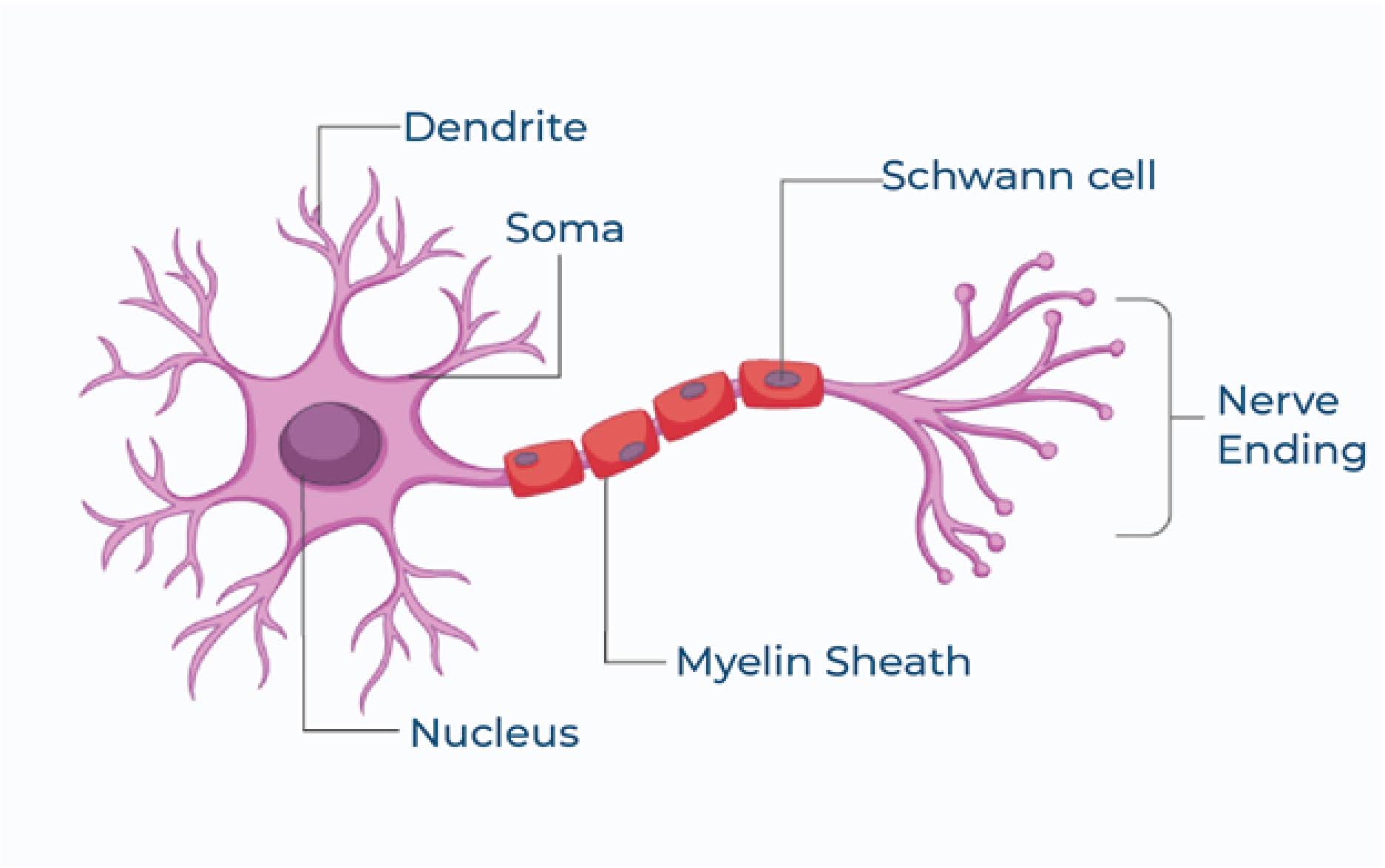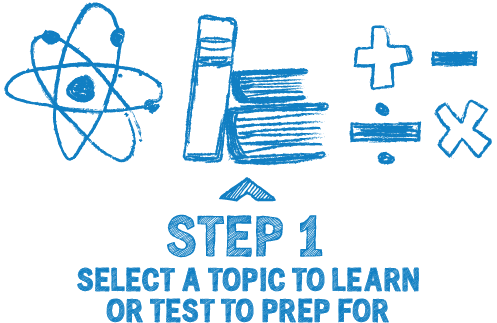What is a Neuron?
Grade 6 Science Worksheets
A neuron is a specialized type of cell that plays a crucial role in transmitting information in the nervous system. Neurons are the basic building blocks of the brain and nervous system, and they are responsible for transmitting electrical and chemical signals between different parts of the body
Table of Contents:
- Structure of a Neuron
- Types of Neurons
- Function of a Neuron
- FAQs
What is a Neuron? - Grade 6 Science Worksheet PDF
This is a free printable / downloadable PDF worksheet with practice problems and answers. You can also work on it online.
|
Untimed | |
Sign up with your email ID to access this free worksheet.
"We really love eTutorWorld!"
"We really love etutorworld!. Anand S and Pooja are excellent math teachers and are quick to respond with requests to tutor on any math topic!" - Kieran Y (via TrustSpot.io)
"My daughter gets distracted easily"
"My daughter gets distracted very easily and Ms. Medini and other teachers were patient with her and redirected her back to the courses.
With the help of Etutorworld, my daughter has been now selected in the Gifted and Talented Program for the school district"
- Nivea Sharma (via TrustSpot.io)
Structure of a Neuron
The structure of a typical neuron can be divided into three main parts: the dendrites, the cell body, and the axon.

Dendrites: These are branching extensions of the neuron’s cell body that receive signals from other neurons. The dendrites are covered in tiny spikes called dendritic spines, which receive the incoming signals and pass them along to the cell body.
Cell Body (Soma): The cell body is the central part of the neuron and contains the nucleus and other cellular components. It integrates the signals received by the dendrites and decides whether to pass the signal along to the axon.
Axon: The axon is a long, slender extension of the neuron that carries the electrical signal away from the cell body. At the end of the axon are branches called axon terminals, which release chemical signals called neurotransmitters that communicate with other neurons or muscle cells.

Axon Hillock: Some neurons have a specialized structure called the axon hillock, which is located at the base of the axon and is responsible for generating and transmitting the electrical signals. Additionally, some neurons have a specialized structure called the axon hillock, which is located at the base of the axon and is responsible for generating and transmitting the electrical signals.
Synapses: The junction between the axon terminal of one neuron and the dendrite of another, where the neurotransmitters are released and received.
Myelin sheath: It is a fatty layer that surrounds and insulates some axons in the nervous system. It is formed by specialized cells called oligodendrocytes in the central nervous system (CNS) and Schwann cells in the peripheral nervous system (PNS). The myelin sheet acts as an electrical insulator, allowing for faster and more efficient transmission of signals along the axon.
In summary, the structure of a neuron is designed to receive and transmit signals in a highly efficient manner, allowing for rapid and accurate communication between neurons and other cells in the body.
Types of Neurons
There are several different types of neurons in the nervous system, each with a distinct shape and function. Here are some of the main types:
Sensory neurons: These neurons are responsible for carrying information from the sensory organs (such as the eyes, ears, and skin) to the brain.
Motor neurons: These neurons are responsible for controlling muscle movements. They receive signals from the brain and send them to the muscles.
Interneurons: These neurons act as a bridge between sensory neurons and motor neurons. They process and integrate information from multiple sources and make decisions about how to respond.
Pyramidal neurons: These are the most common type of neurons in the cerebral cortex, the outer layer of the brain. They have a pyramid-shaped cell body and multiple dendrites.
Purkinje neurons: These are specialized neurons found in the cerebellum, a part of the brain that is important for motor coordination. They have a large, elaborate dendritic tree that receives input from other neurons.
Bipolar neurons: These neurons have two distinct processes (axon and dendrite) extending from opposite ends of the cell body. They are often found in sensory systems, such as the retina.
Unipolar neurons: These neurons have a single process that extends from the cell body and divides into two branches. They are often found in the peripheral nervous system, where they transmit sensory information from the body to the spinal cord.
These are just a few examples of the many different types of neurons found in the nervous system. Each type of neuron plays a specific role in processing and transmitting information throughout the body.
“There have been times when we booked them last minute, but the teachers have been extremely well-prepared and the help desk at etutorworld is very prompt.
Our kid is doing much better with a higher score.”
6th Grade Tutoring
eTutorWorld offers Personalized Online Tutoring for Math, Science, English, and Standardised Tests.
Our Tutoring Packs start at just under $22.49 per hour, and come with a moneyback guarantee.
Schedule a FREE Trial Session, and experience quality tutoring for yourself. (No credit card required.)
Function of a Neuron
The primary function of a neuron is to transmit signals within the nervous system. This is achieved through a complex process involving the following steps:
Reception of signals: The dendrites of a neuron receive signals from other neurons or sensory cells.
Integration of signals: The cell body integrates the signals received by the dendrites and decides whether to pass the signal along to the axon.
Generation of an action potential: If the sum of the signals received by the dendrites is strong enough, the cell body generates an electrical signal called an action potential.
Propagation of the action potential: The action potential is propagated along the axon towards the axon terminals.

Release of neurotransmitters: At the axon terminals, the action potential triggers the release of chemical signals called neurotransmitters into the synaptic cleft, which is the gap between the axon terminal and the dendrite of another neuron.
Reception of neurotransmitters: The neurotransmitters are received by receptors on the dendrites of the next neuron, causing changes in the electrical potential of the receiving neuron and leading to the transmission of the signal to the next neuron.
In summary, the function of a neuron is to receive signals, integrate them, and transmit them to other neurons or target cells, allowing for rapid and efficient communication within the nervous system.
Do You Stack Up Against the Best?
If you have 30 minutes, try our free diagnostics test and assess your skills.
FAQS
What are neurons and what is their function?
Neurons are specialized cells that form the basic building blocks of the nervous system. They are responsible for transmitting signals within the nervous system, allowing for rapid and efficient communication between different parts of the body.
What are the main parts of a neuron?
A typical neuron consists of several key parts, including the cell body, dendrites, axon, and axon terminals.
What is an action potential and how does it work?
An action potential is a rapid and brief change in the electrical potential of a neuron that is used to transmit signals along the axon. It is the result of the movement of positively charged ions, such as sodium (Na+) and potassium (K+), across the cell membrane.
What are neurotransmitters and what is their role?
Neurotransmitters are chemical signaling molecules that are released by neurons into the synaptic cleft, the small gap between the axon terminal of one neuron and the dendrite of another neuron. They play a crucial role in transmitting signals from one neuron to the next, allowing for rapid and efficient communication within the nervous system.
What is the difference between an excitatory and inhibitory neurotransmitter?
Excitatory neurotransmitters, such as glutamate, increase the likelihood that the target neuron will generate an action potential. Inhibitory neurotransmitters, such as GABA, decrease the likelihood that the target neuron will generate an action potential.
How does the nervous system communicate with other systems in the body?
The nervous system communicates with other systems in the body through the release of neurotransmitters, hormones, and other signaling molecules. These signaling molecules bind to receptors on target cells, leading to changes in the electrical potential of the target cells and transmitting signals to the next neuron or target cell.

Kathleen Currence is one of the founders of eTutorWorld. Previously a middle school principal in Kansas City School District, she has an MA in Education from the University of Dayton, Ohio. She is a prolific writer, and likes to explain Science topics in student-friendly language. LinkedIn Profile
Affordable Tutoring Now Starts at Just $22.49
eTutorWorld offers affordable one-on-one live tutoring over the web for Grades K-12. We are also a leading provider of Test Prep help for Standardized Tests (SCAT, CogAT, MAP, SSAT, SAT, ACT, ISEE, and AP).
What makes eTutorWorld stand apart are: flexibility in lesson scheduling, quality of hand-picked tutors, assignment of tutors based on academic counseling and diagnostic tests of each student, and our 100% money-back guarantee.
Whether you have never tried personalized online tutoring before or are looking for better tutors and flexibility at an affordable price point, schedule a FREE TRIAL Session with us today.
*There is no purchase obligation or credit card requirement
Grade 6 Science Worksheets
- Inquiry process
- Nature of Science
- Scientific Inquiry
- Inquiry, Analysis and Problem Solving
- Ethical Practices
- Science and Society
- Biotic and Abiotic Factors
- Impact of Organisms
- Adaptation
- Spheres of Earth
- Natural Resources
- Environmental Issues
- Conservation of Earth
- Understanding Technology
- Abilities To Do Technological Design
- Structure of Earth
- Solar System
- Rocks and Fossils
- Earth Systems
- Plate Tectonics
- Evolution
- Magnetic Field of Earth
- Geologic Time
- Materials and Processes That Shape a Planet
- Astronomy
- Ecology
- Energy
- Kinetic and Potential Energy
- Energy Transfer
- Matter and its Structure
- States of Matter
- Physical and Chemical Changes
- Force and Motion
- Electricity and Magnetism
- Wave Interactions
- Sound
- Light
- Introduction to Life Science
- The Origin & History of Life On Earth
- Plant and Animal Cells
- Parts of a Cell
- The Cell Cycle
- How Living Organisms Get Energy
- Classification of Organisms
- How Plants Grow & Reproduce
- The Human Respiratory System
- The Human Cardiovascular System
- The Human Digestive System
- The Human Endocrine Systems
- The Human Nervous System
- The Human Muscular System
- The Human Skeletal System
IN THE NEWS

Our mission is to provide high quality online tutoring services, using state of the art Internet technology, to school students worldwide.
Online test prep and practice
SCAT
SSAT
ISEE
PSAT
SAT
ACT
AP Exam
Science Tutoring
Physics Tutoring
Chemistry Tutoring
Biology Tutoring
Math Tutoring
Pre-Algebra Tutoring
Algebra Tutoring
Pre Calculus Tutoring
Calculus Tutoring
Geometry Tutoring
Trigonometry Tutoring
Statistics Tutoring
Quick links
Free Worksheets
Fact sheet
Sales Partner Opportunities
Parents
Passive Fundraising
Virtual Fundraising
Our Expert Tutors
Safe and Secure Tutoring
Interactive Online Tutoring
After School Tutoring
Elementary School Tutoring
Middle School Tutoring
High School Tutoring
Home Work Help
Math Tutors New York City
Press
©2022 eTutorWorld Terms of use Privacy Policy Site by Little Red Bird
©2022 eTutorWorld
Terms of use
Privacy Policy
Site by Little Red Bird










